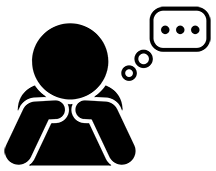14
The OER adoption process is not just about switching a textbook. You will likely need to evaluate and change your assignments. Because so many commercial textbooks come with the lecture materials, test banks, and other supplementary materials, faculty often equate the OER textbook selection process with that of selecting a commercial textbook. It is different, and you will need to consider assignment design as a separate process. It is more work now, but the results for the student is that they will have a more thoughtful assignment that considers their best outcomes. This chapter on Open Pedagogy is aspirational. We know that you are not likely able to make these types of changes right away. But we hope that you consider moving towards Open Pedagogy as it leads to students creating work that they value and will be valued by others in years to come, through their creation of creative commons licensed work. It is one way to create assignments that are more meaningful “real world” projects for the students to complete. But, in no way are we saying that Open Pedagogy is a necessary part of making your course “Open” for the semester you are planning to adopt.
At its heart, Open Pedagogy is about including the students in the curricular design and decision-making processes, as well as facilitating student agency within the curriculum. As one of the most popular approaches, Open Pedagogy invites students to contribute to future courses by co-creating the course materials alongside the instructor, as demonstrations of their learning within the course.
OER adoption can be a first step toward reconsidering assignments. An important element of Open Pedagogy is moving away from disposable assignments – assignments limited to the walls of the course. Open Pedagogy focuses on renewable assignments, public assignments. The goal is for assignment artifacts to publicly demonstrate student learning, while also providing credit to students working as authors, editors, collaborators. Renewable assignments can include public publishing of writing to build student writing portfolios which can be linked on their resume.
For many practitioners, drawing from Open Pedagogy to design their course means building assignments that can be used again, either by students, or by the instructor. This becomes a blend of including students in the curricular design process and building renewable, outward-facing assessments.
Open Pedagogy instructors have created edited collections for their courses, working with students to create OER that will be assigned in future semesters. This creates an environment where students are empowered to make decisions about the curriculum, and to publicly publish their work. In future semesters, a new group of students can continue to build on the material, or create instructional support materials for future learners – inviting students into the diversity and inclusion curricular design process!
In other instances, Instructors have created course blogs to share ideas. These blogs can be accessed and pointed to by students on their resumes and in professional documents beyond the walls of a semester. These blogs also provide writing space for students to drive the conversations they want to engage related to course materials. It asks for students to think and write in ways that move the course forward.
Below we include resources and links to openly published materials on Open Pedagogy, to help readers find additional ideas as they move from OER adoption to Open Pedagogy implementation.
 Read
Read
The OER Starter Kit Workbook includes a chapter on Open Pedagogy. We recommend you read the following sections in this chapter:
-
- Open Pedagogy
- Tools for Implementing Renewable Assignments
Additionally, the Open Pedagogy Notebook includes an examples section. This page contains wonderful examples of how faculty at a variety of institutions have incorporated open pedagogy in their assignments. We believe this resource can inspire your explorations of renewable, outward-facing assessments within your learning spaces.
Finally, we recommend A guide to Making Open Textbooks with Students. When you want to explore co-authoring a text with your students, this open resources provides important ideas, considerations, and details for that open assignment.
Upon completion of the readings, return to this page.
 Watch
Watch
Expanding OER with Open Pedagogy (33 min, 24 sec) — Jill Hallam-Miller of Bucknell University.
This Millersville University Open Ed Week session, Hallam-Miller provides an overview of open pedagogy, which utilizes the open licensing feature of OER to facilitate enhanced student engagement with course content. Includes a discussion of practical applications. Should you wish to visit any of the links discussed in this presentation Jill has shared a view only link to her slides.
Optional Reading:
 Something to Ponder
Something to Ponder
- How can I assess my assignments to ensure a more authentic learning experience for the students? (OER Starter Kit provides Link to supporting resource)
As we’ve emphasized throughout this book, OER adoption can be strengthened when adopters build community and conversation about their decisions and experiences. We invite you to not just ponder, but join this conversation on Twitter with #OERJourney.
